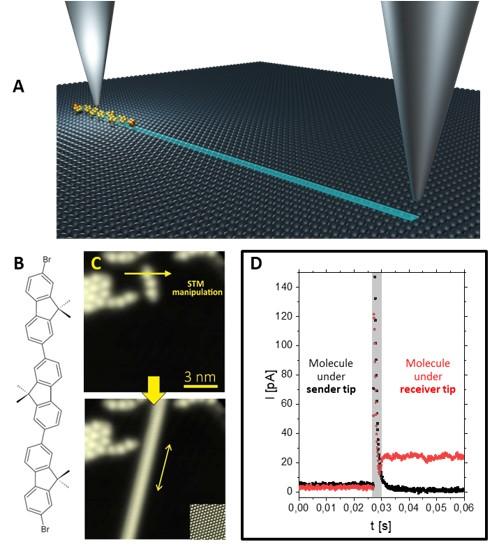
Scientific Achievement
Single molecules can be sent and received over large distances (>150 nm) along precisely defined tracks across a flat metal surface.
Significance and Impact
This work realizes a groundbreaking experiment - analogous to throwing and catching a ball in the macroscopic world - where a single molecule is moved across a flat surface over large distances with an extremely high spatial precision of 0.1 Å.
Research Details
- A dibromoterfluorene (DBTF) molecule is stabilized in an orientation of high translational mobility - a local electrostatic force is applied to STM tip that moves the molecule along Ag [11 ̅0] of a Ag(111) surface.
Two independent tips of the 4-probe scanning tunneling microscope (STM) are used to send and receive the same single DBTF molecule simultaneously, allowing the time measurement of the molecular transfer.
D. Civita, M. Kolmer, G. J. Simpson, A.-P. Li, S. Hecht, and L. Grill, "Control of Long-Distance Motion of Single Molecules on a Surface," Science 370, 957-960 (2020). DOI: 10.1126/science.abd0696
Work was performed as a User Project at the Center for Nanophase Materials Sciences, at University of Graz, Humboldt-Universität zu Berlin, DWI - Leibniz Institute for Interactive Materials, and RWTH Aachen University.


